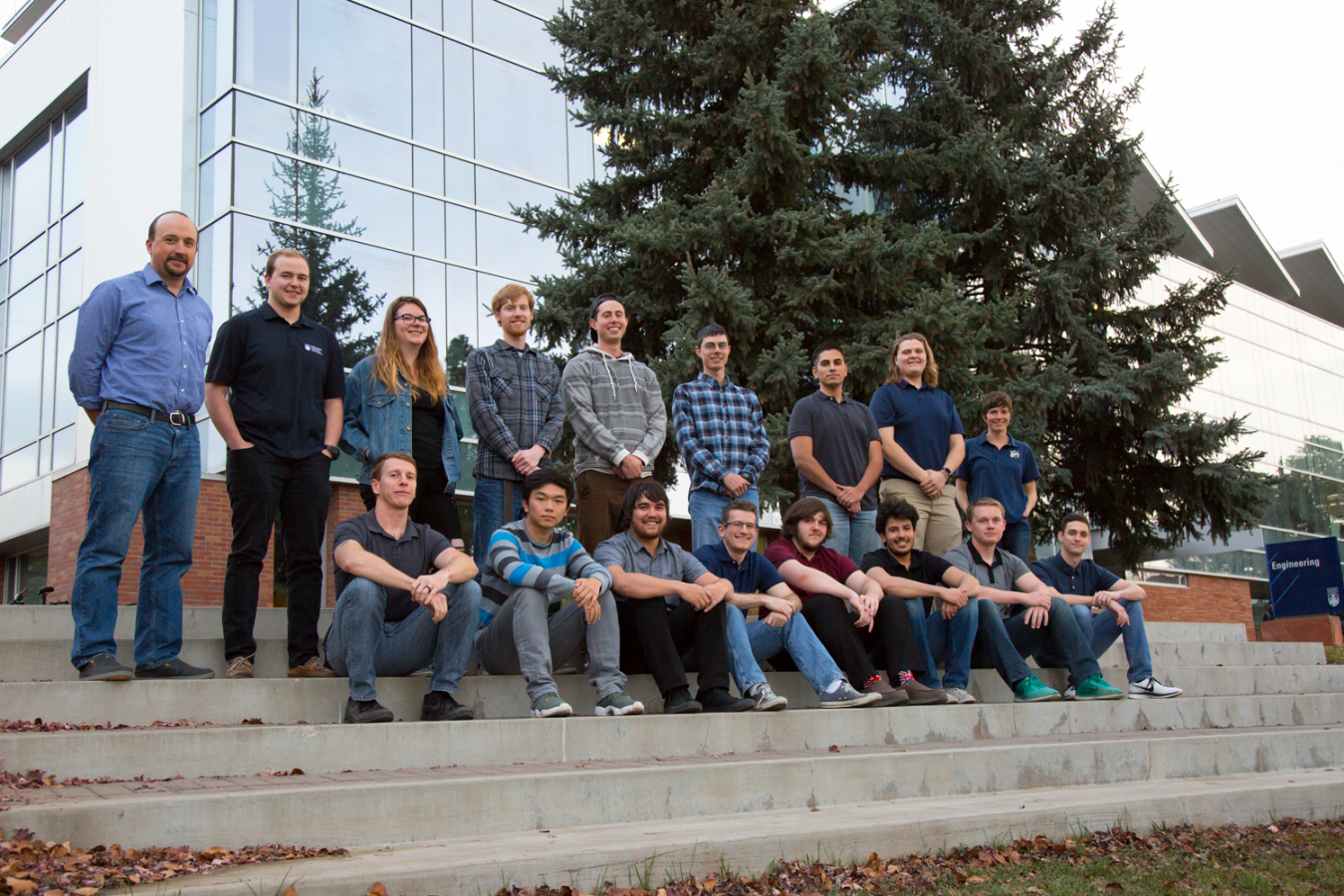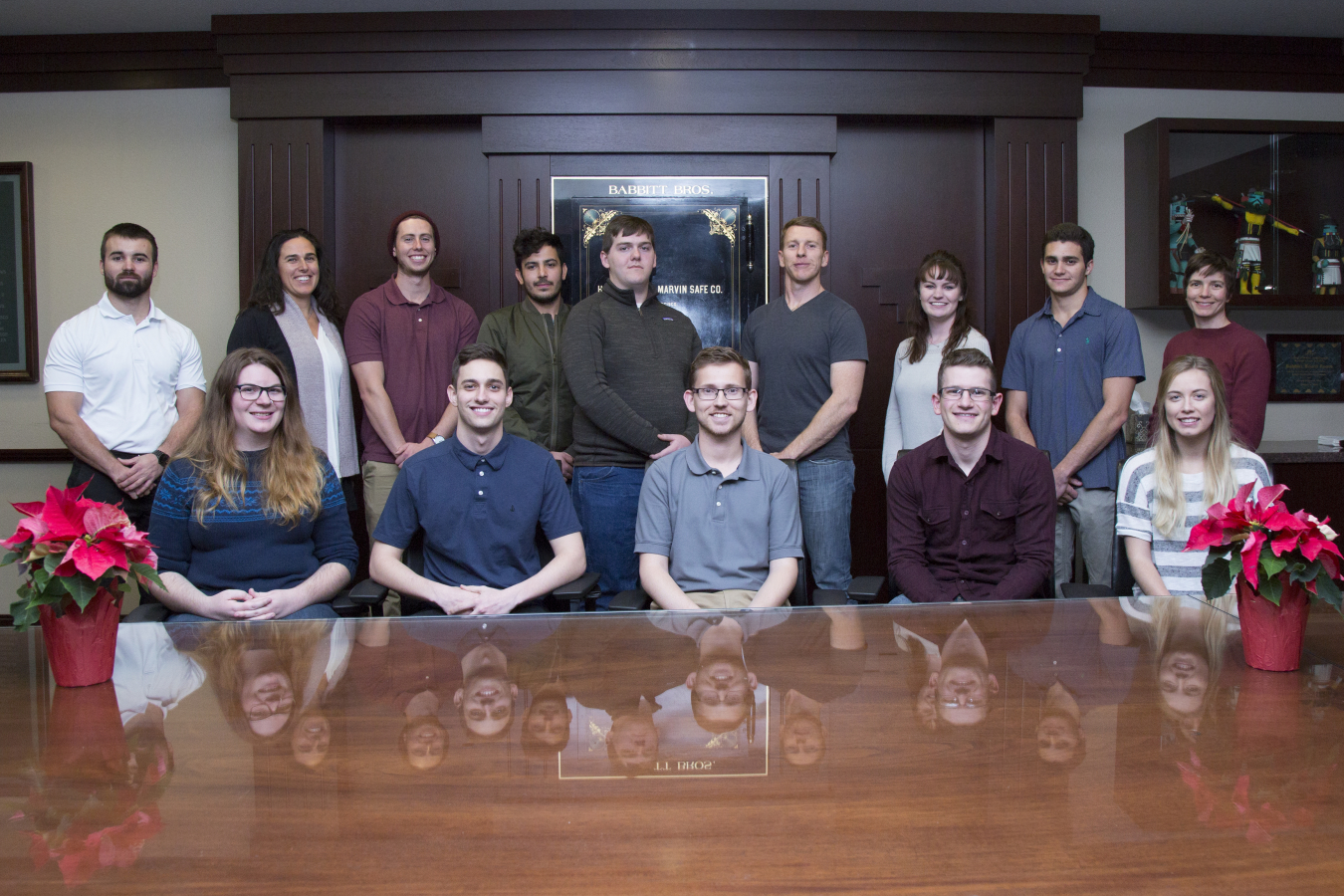
Top row, from left: David Willy, Michael Vogelsang, Alana Benson, Mitchell Green, Evan Heiland, Devon Hardy, Leo Segura, Dakota Sallaway, Karin Wadsack. Bottom row, from left: Anthony Cheslic, Qian Zhao, Benjamin Macleod, Aaron Deluca, Yousef Alali, Spencer Mcmahon, Jacob Peterson

Top row, from left: Tyler Brown, Denise Parris, Evan Heiland, Yousef Alali, Alex Dahlman, Anthony Cheslic, Jordan Parker, Shawn Malkou, Karin Wadsack. Bottom row, from left: Alana Benson, Jacob Benson, Tristan Scott, Aaron Deluca, Diana Carlson
TEAM NAME
TEAM NAU
WHY WIND
Northern Arizona University students chose this project because we value real-world experience in one of the fastest-growing industries in the United States. This project provides an opportunity to work with interdisciplinary teams on a relevant and interesting topic that prepares us for employment after college. Many students are interested in renewable energy because of the numerous intellectual, economic, and environmental benefits the field holds.
TEAM TURBINE
The team is designing a turbine for use with an application that involves energy storage and potential islanding. The turbine is a three bladed, direct-drive, horizontal axis wind turbine with active pitching and yawing systems.
GAME PLAN
The 22 undergraduates on Team NAU are divided up into four teams. The two test teams are composed of an interdisciplinary mix of six mechanical and seven electrical engineers focusing on the design and manufacturing of the test turbine. Each test team has two leaders and all students are experts on a specific subcomponent of the turbine. The market teams are divided into six mechanical engineers and four business administration students. The engineers are divided into groups working on the aerodynamic and mechanical portions of the market turbine. The business students are researching specific business solutions within the target market. Each team meets at least once a week and the engineering leads meet once a week to report on progress.
TEAM STRENGTHS
Team NAU students are highly committed to gaining the interdisciplinary communication skills needed for this competition. The group has communicated with over a dozen different faculty members of varying disciplines, many of which have expertise in the wind power field. We have also communicated directly with dozens of companies in our market research and product development.
TEAM HURDLES
One challenge for the team is with the organization of meetings between all the students and supporting faculty members. The team had to get through initial research and learn about the wind energy field to break down the project into appropriate tasks. The students are enjoying diving deep into their chosen specialization within the project.
COLLEGIATE WIND COMPETITION OBJECTIVES
Team NAU students expressed that the most important skill gained from this competition is teamwork. This type of teamwork is highly reflective of what they’ll see in the industry. After the first semester of work, students feel more confident in areas such as professional conduct and working with students from different backgrounds. No matter how the competition goes, the student are grateful for the opportunity to work on such a challenging, intriguing, and rewarding project.
COMMUNITY ENGAGEMENT
Students were involved in a KidWind challenge in mid-November. Several TEAM NAU members volunteered throughout the day to help make the challenge a success for 14 middle and high school teams from our area.
We will also be working with local media outlets, and we’ve already published two stories through our Business School news outlet.
This webpage was submitted to the U.S. Department of Energy by the team.

